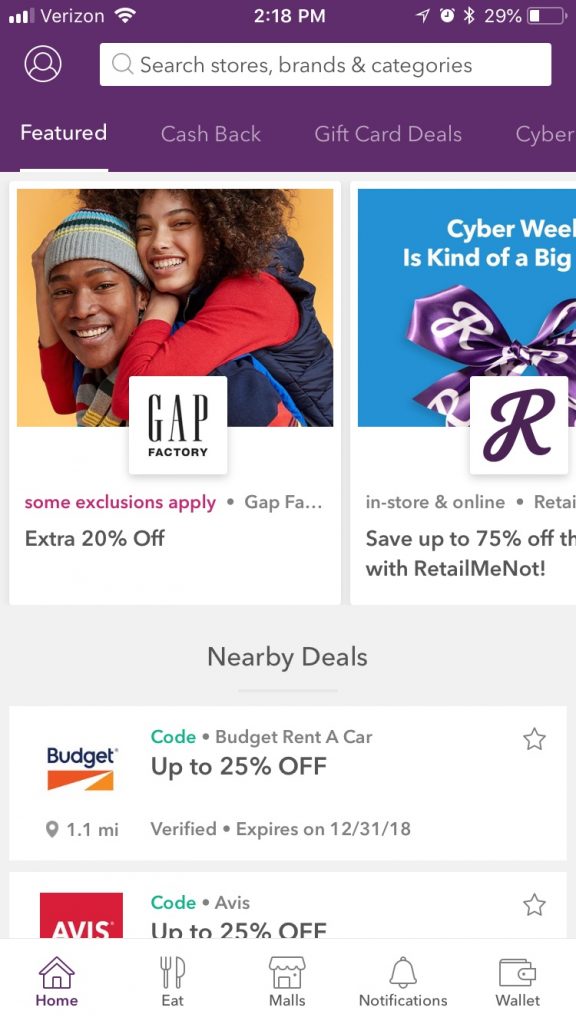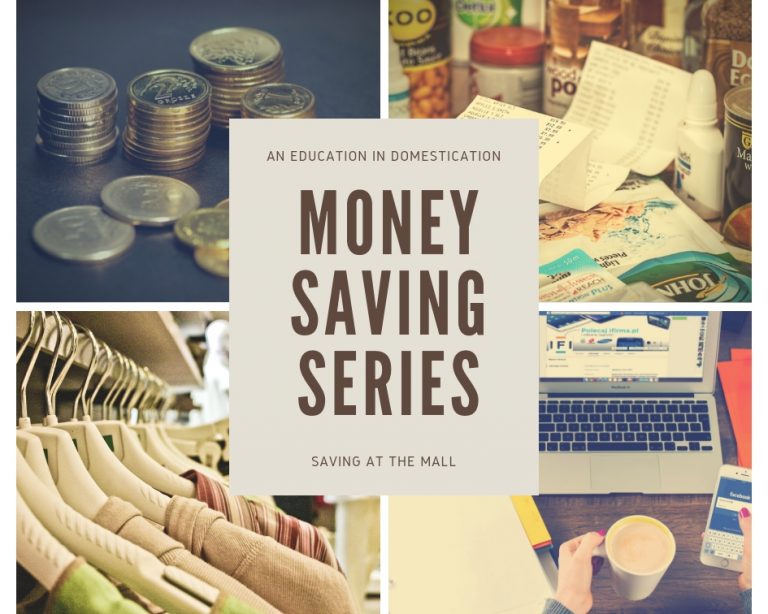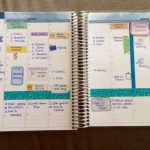Most would say that if you’re trying to save money, shopping at the mall or otherwise is probably not a good idea. And while I agree with that in theory, we also know that there are times when you need to buy things.
I’m not talking about a random shopping spree because you feel the urge (and let’s be fair, that urge happens). But there are times wheen you need to replenish a product you use or replace something in your home that stopped working. It’s okay to buy things.
I will say it again; it’s okay to buy things.
It’s even better to buy things and not pay full price for them if you don’t have to, which is how I like to live my life. If I’m paying full price for something it’s because I genuinely need it and can’t find it for a better price anywhere else.
So how does this work?
1. Shop sales
Yeah, that sounds like I said it before when it comes to grocery shopping…and I did, but the same thing goes for any shopping. Lately, it’s almost pointless to buy things at most department stores or higher end stores during the week because there’s almost always a sale on the weekend. Stores are typically more crowded, which can be annoying (for us introverts especially), but why buy something full price when it’s 40% off three days later? That just seems silly.
Also, did you know that there are typically times of the year that have rock bottom prices on a lot of items? Obviously, this doesn’t usually factor into emergency replacements or if you need something quickly. But if you’re looking to replace a piece of electronics or an appliance or bedding, etc, there is typically a certain time of the year that you will find that item at the lowest cost. Consumer Reports is really good at keeping a long list of items and when you can find them cheapest. Like November is the best month to buy those new headphones you’ve been wanting all year…or to have someone buy them for you for Christmas.
2. Price Matching
Most stores these days will price match items; even higher end stores like Nordstrom will price-match items. How it works, for most stores, is you have to show proof that an item is being sold at another store or online for a cheaper price. It does have to be the same exact item, so you can’t get something similar for the lesser price. For example: If you saw these cute Kate Spade His and Her Glasses on sale for $35 at Macy’s:

You can’t go to Nordstrom and take this set to the cashier and say, “can I price match these to get the $35 sale price?”

While similar, they aren’t the same item; it has to be an exact match. Some stores will also put restrictions on what stores they will price match with. For instance, some stores won’t price-match Amazon because their prices fluctuate all the time. So, it helps to check their policies, most of which can be found online or by speaking to an employee or store manager.
3. Shop clearance
Which sounds really similar to shopping sales, and it is, but these are items that are usually 60% off or more; I’ve found clearance for 90% before because stores just want to get rid of it. The best part is a lot of the time clearance prices can be combined with sale prices so you literally pay pennies on the dollar for items.
Clearance is especially great for clothes shopping. While you won’t necessarily find what is “trendy” as it’s usually things from the past season; it’s a great place to stock up on closet staples that don’t go out of style and things that you can wear for multiple seasons. One of my favorite blouses is from the clearance rack about five years ago.

It retailed for about $80 and I paid $10 for it because it was from two seasons ago and they wanted to be rid of it. There was nothing wrong with it; it was just “out-dated”. I still own it and wear it regularly and, I say again, it was $10. I check clearance before i go anywhere else in a store. You’ll be surprised how much good stuff you find on those racks.
4. Shop “discount” stores
You know, those stores people used to not like to say they shopped at? Stores like Ross, Marshalls, TJ Maxx, even consignment and second-hand stores. You can get so much good stuff at all of these places. They do, sometimes, require a little more sorting through racks and searching for exactly what you want, but it’s typically worth it. I even found these cute little light up letters at a second-hand store near me over the summer that I keep on my desk at work.

They’re fully functional and the store had a bunch of different letters, and they were like $2/piece.
I will admit, there are a few things I won’t buy from these stores like shoes, some furniture (like sofa’s or chairs) or personal care products. Not that there is anything inherently wrong with any of these from these stores; it’s just a personal preference. But even outside of that, I’ll happily go shop at any of these stores before I go to a mall.
5. Use coupons/Retail-Me-Not
Of course there are coupons for everything. Back in the day you had to have either some sort of mailer coupon or have them printed off, now you can literally just download an app called “Retail Me Not” on your phone and have the cashier’s scan the barcode and you’ll get whatever discount applies.

Stores do still mail out coupons and discount offers which I always hang on to just in case I do wind up shopping there for something. A lot of stores also offer loyalty programs now which either enables them to email or mail you coupons, or reward you for shopping there. If you’re worried about your email inbox getting “junky” create a new email specifically for these offers, so you can ignore it when you don’t want to read any of it and be tempted or just search through when you’re looking to make a purchase. I did this a couple of years ago and having everything in one email account has made my life so much easier.
6. Wait to make a purchase/Don’t shop at all
I know, I said it’s okay to buy things, and it is, but think about it before you do. Is this something you genuinely need or is it just something you want? More often than not, if you allow the initial moment of “ooooh, I want that” to pass, you find you don’t really want what you were going to purchase. A lot of times, especially on impulse purchases, what I will do is walk around the store with the item for awhile. A lot of the time when I do this, I end up putting the item back on the shelf because I didn’t really need it. If it’s a really big impulse purchase, I’ll usually leave it in the store and go home and think about it. If it’s something I can’t stop thinking about and really still desperately want, I’ll try to see if I can find it online for less money or will go back during a sale and grab it.
What other ways do you help yourseelf save money when shopping?







